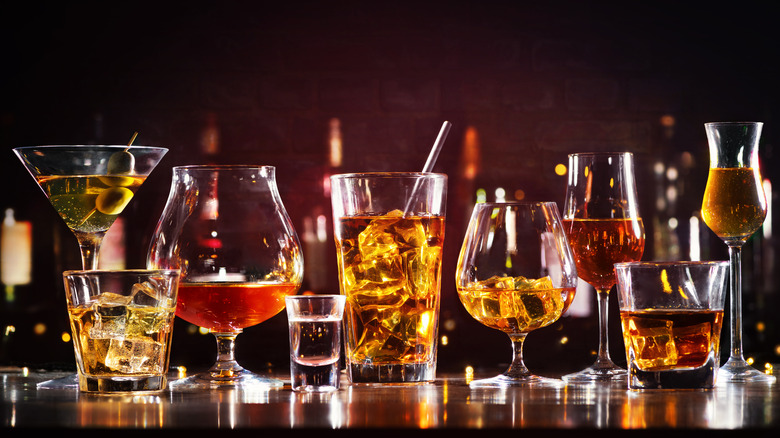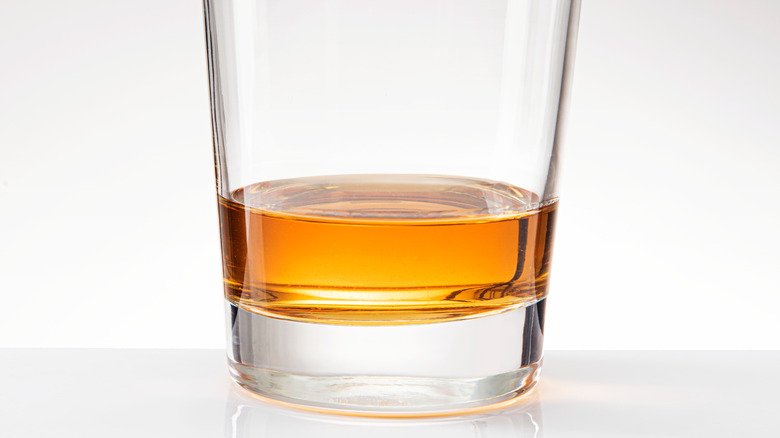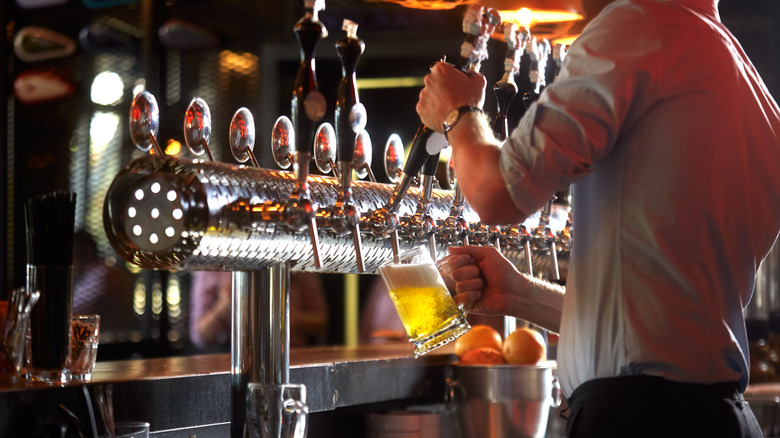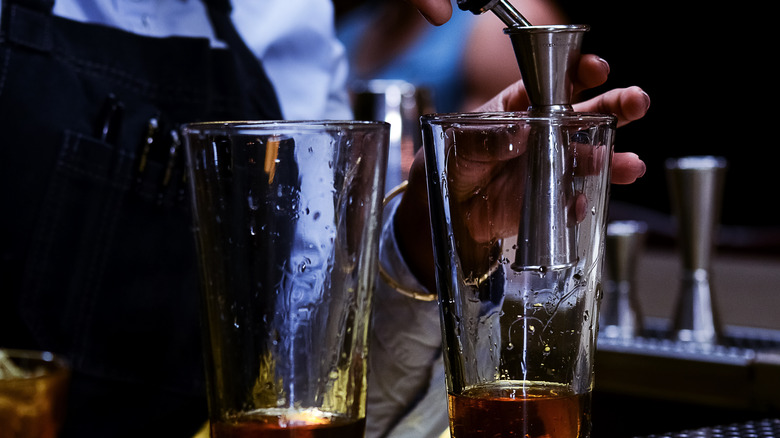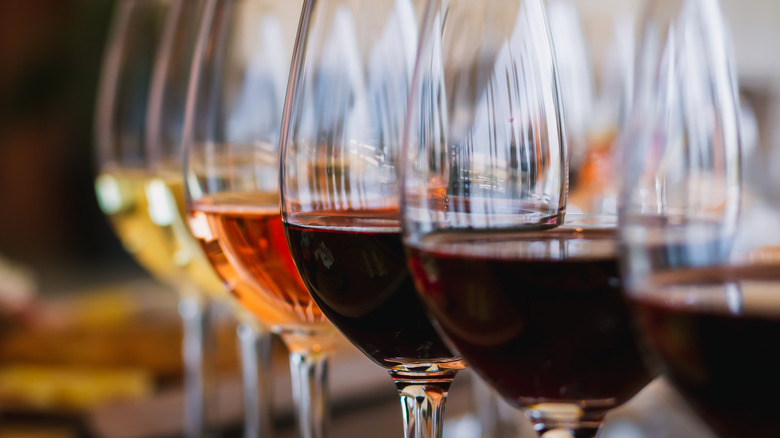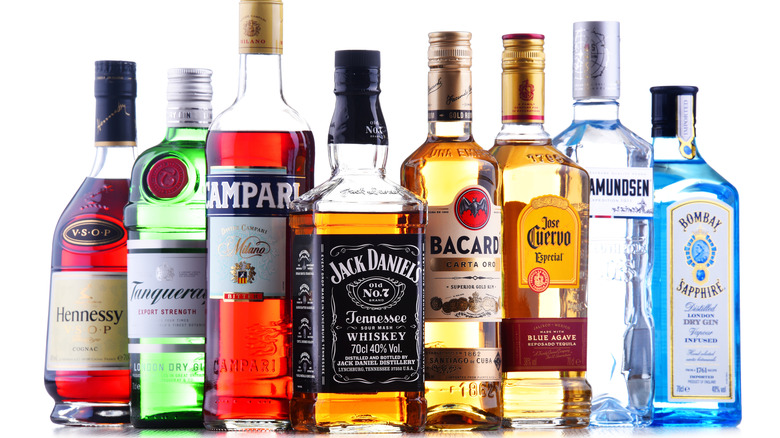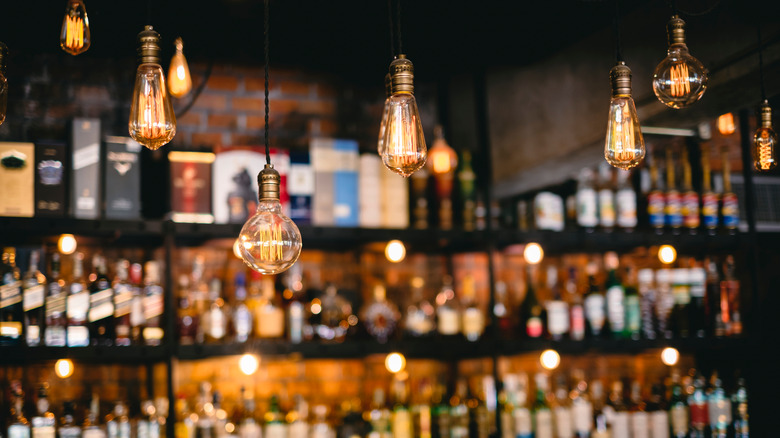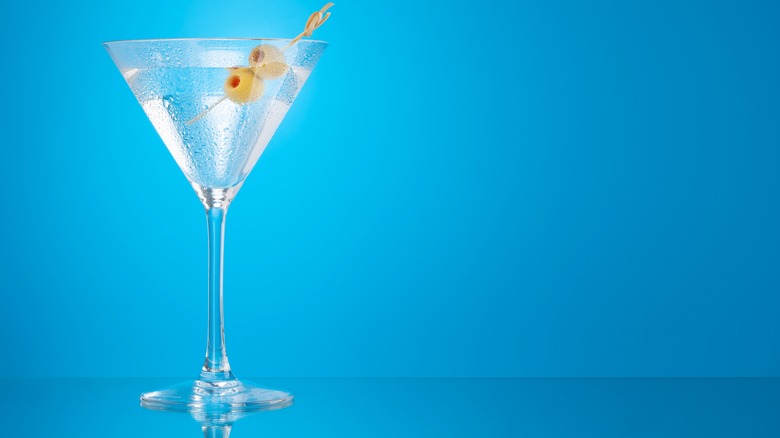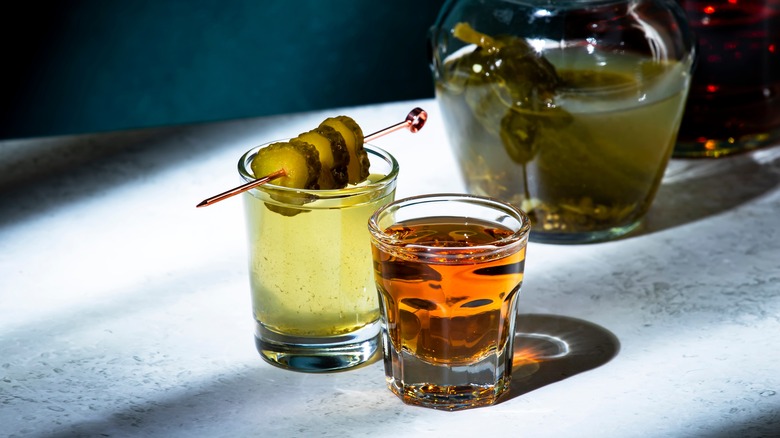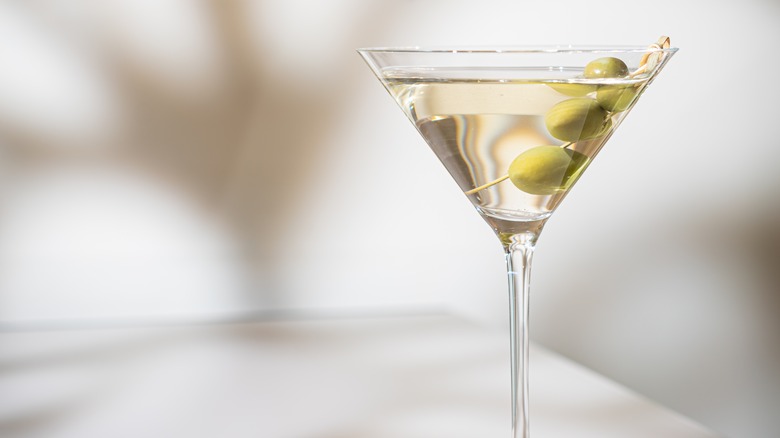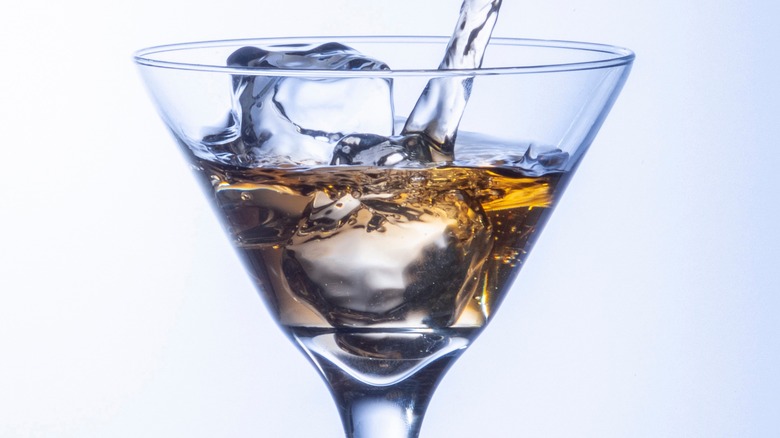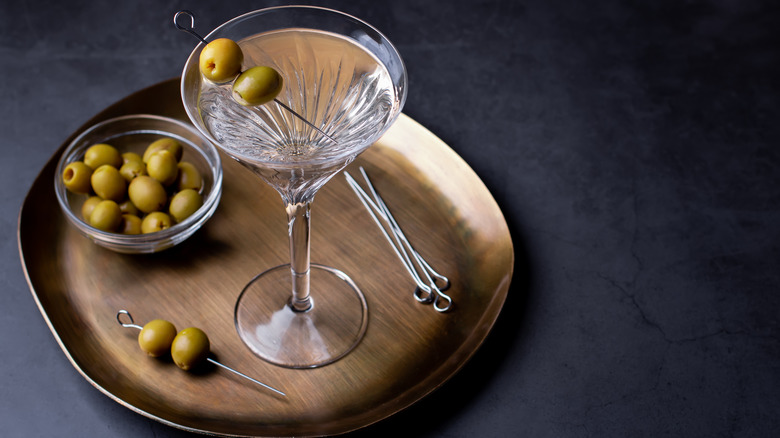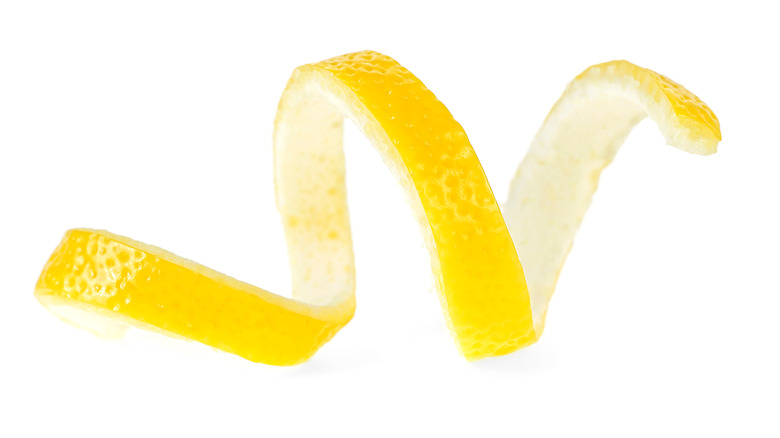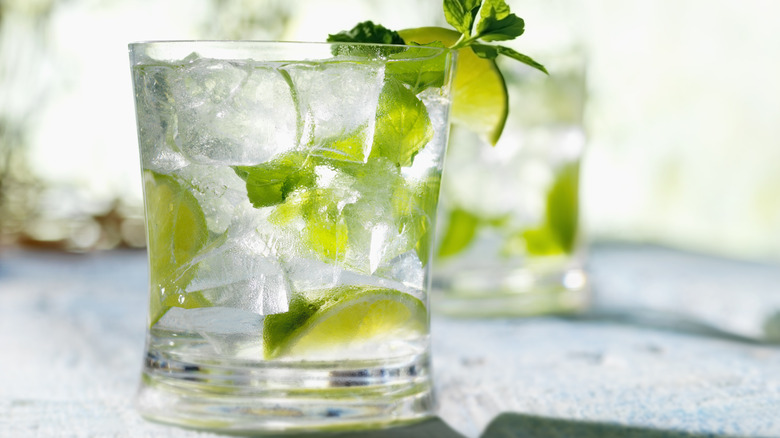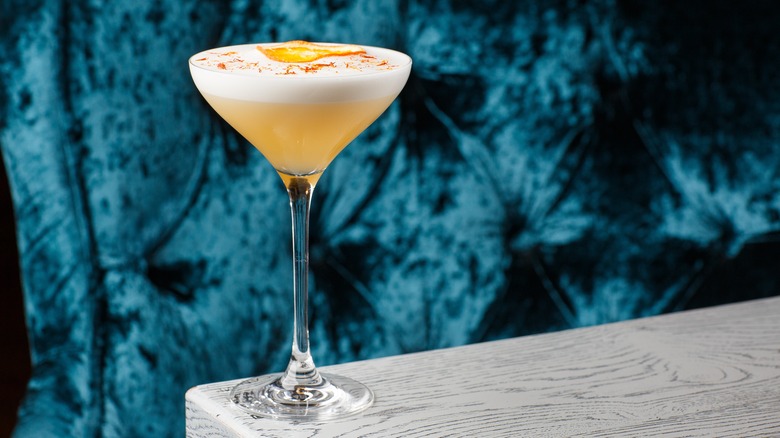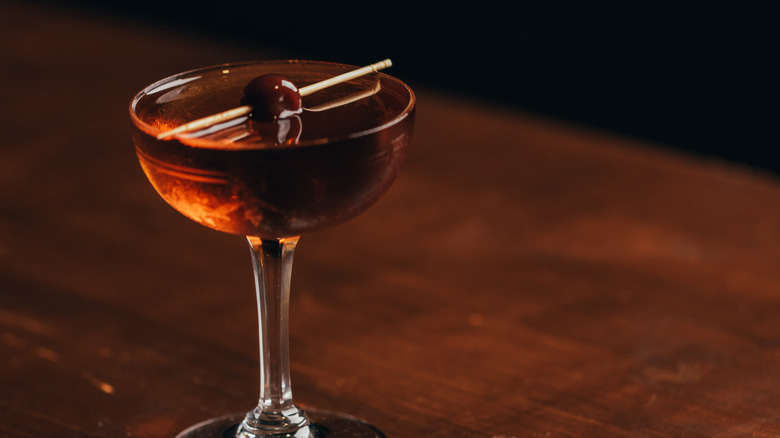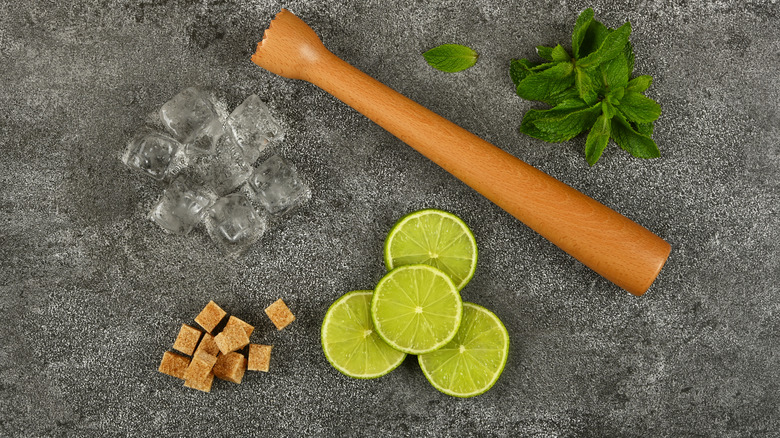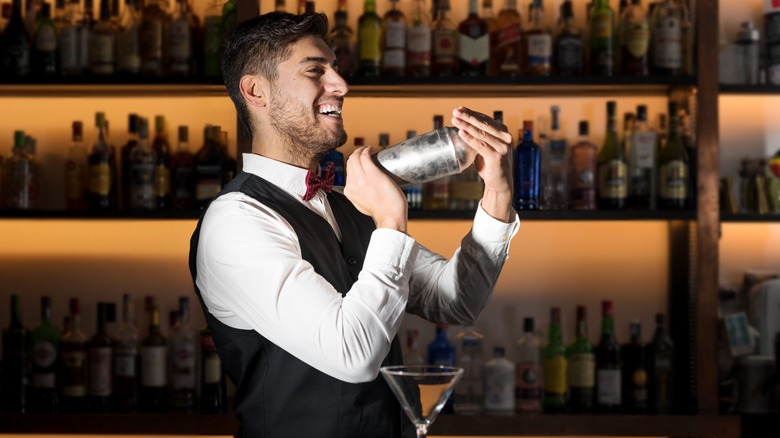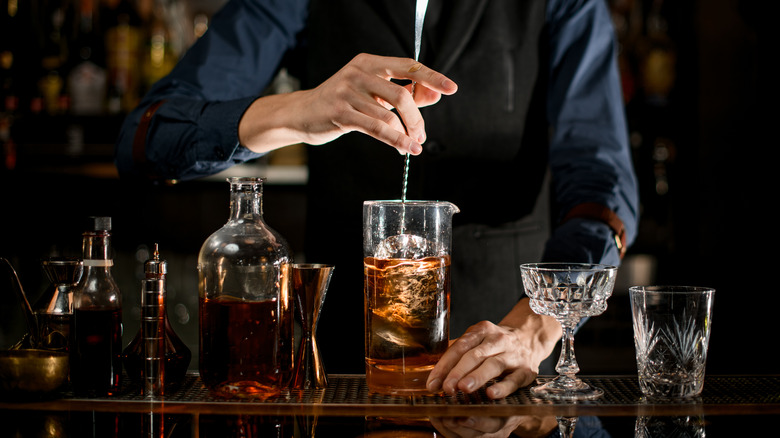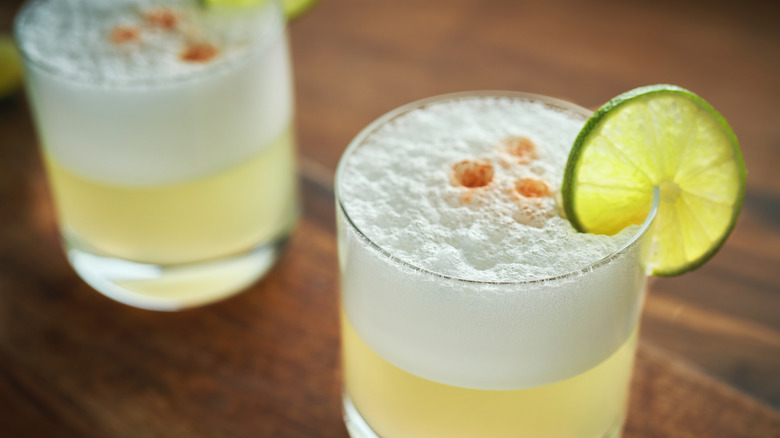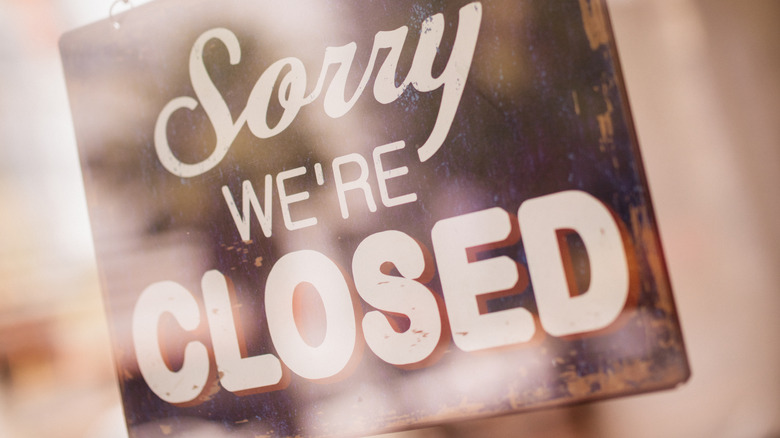22 Essential Terms You Need To Know When Ordering At The Bar
Drinking at bars is a lot of fun — if you know what you're doing. While you can certainly get away with just asking for a can of beer or telling the bartender you'll have what your friend is having, drinking is a much more enjoyable experience when you have a little bar-lingo knowledge under your belt. After all, feeling embarrassed when you order a drink is a serious buzzkill (pun intended).
If you don't know your dry from your dirty or your shaken from your stirred, don't worry. We're here to teach you everything you need to know about ordering drinks. Not only will this guide help you sound like you're a bar-patronizing pro, but it will also help you end up with a beverage you actually enjoy. By understanding a handful of essential terms, you'll never have to worry about getting stage fright when you walk up to the bar again.
1. Neat
If you've ever been to a bar (or watched a movie in which a character sidles up) and heard someone confidently ask for something "neat," then you'll probably agree that it's a good way to sound like you know what you're doing. Luckily, this smooth-sounding order is about as simple as gets to understand — it simply refers to a pour of liquor that's served at room temperature, without being shaken or stirred, and without ice.
This term can generally be used interchangeably with the term "straight," so whether you order your whiskey (or whatever your spirit of choice may be) neat or straight the bartender is going to hand you plain liquor in a glass. Ordering a neat drink isn't for the faint of heart, and we highly recommend opting for the good stuff should you choose to do so. Trust us, drinking well liquor (more on that, later) neat isn't most people's idea of a good time.
2. Shot
There are a few different meanings for this one, but generally speaking, a shot refers to a small amount of alcohol that's meant to be consumed in one gulp (or maybe two). What exactly that small amount of alcohol is depends on what you order. If you ask for a shot of tequila, then you'll get about an ounce and a half of tequila in a shot glass. However, if you order something like a green tea shot or a lemon drop shot, you'll get a small pour of what's essentially a cocktail.
Many people also use the word "shot" to denote a specific measure of alcohol, especially when they're making drinks at home, so you might hear someone say their drink contains a shot of vodka, or two shots of tequila, etc. Bars typically use ounces to measure rather than shots, and some bars pour heavier shots than others, so it's a good idea to conceptualize a shot as something you throw back rather than as a reliable measurement.
3. On tap
You've probably heard someone ask a server or bartender, "What's on tap?" when you've been out at a bar or restaurant. "On tap" refers to beer that comes from a keg rather than a can or bottle. A keg is a large, metal container that's used to store beer. It's usually connected to a CO2 system which provides carbonation and keeps the beer fresh and frothy.
Many people prefer beer on tap over canned or bottled stuff because they enjoy the fresh taste and added effervescence. You can think of the difference between beer on tap and canned beer like you would the difference between a canned soda and a fountain soda — everyone has a preference.
The term can also be used interchangeably with "on draft." Many bars rotate their draft list to provide guests with new options, and menus will often instruct guests to inquire about the day's beer selection.
4. Well
This refers to the cheapest bottle of any variety of liquor the bar has on offer. Most bars have well vodka, well whiskey, well rum, well gin, well tequila, etc. It's usually what you'll be served if you ask for something like a vodka soda without specifying the brand of vodka you'd like. The bartending term "well drink" refers to the fact that these bargain bottles are usually stored in the rack directly below the bar (which is called the well) for easy access.
Though well liquor isn't the best quality (or tastiest) option out there, it can do the trick if you are prioritizing value or you're consuming a beverage in which the liquor isn't the star of the show. There's no need to waste your money on a top-shelf whiskey if you're planning to drink it with Coke. One thing to keep in mind is that some high-end establishments don't have well liquor, and will default to something more expensive if you just ask for, say, a gin and tonic.
5. House
This term can be used interchangeably with the term "well" if it's referring to straight liquor. However, one key difference to keep in mind is that "house" can also refer to wine. Many bars and restaurants have a "house red" and "house white" which represent the establishment's most affordable options. If you're at a bar that offers wine as part of their happy hour, you'll usually be given a glass of their house pour. House wine is usually served by the glass or bottle, but some places also serve it by the carafe.
The quality of house wine can range dramatically depending on the caliber of the establishment you're visiting. Some house wines are delicious, while others taste like they came from a box. If you consider yourself a wine snob, you might want to steer clear of these options. If you can't tell the difference between a full-bodied cabernet and a light and fruity pinot, then by all means, order a glass of the house vino.
6. Call
If you're wondering what a call drink actually is, the best way to think about it is that it's any drink that you order by "calling" out a specific brand of liquor by name. Unlike a well drink, for which you don't specify a certain type of liquor, ordering a call drink requires you to make a choice about which brand you'd like to drink. For example, a Tanqueray and tonic is considered a call drink. So is a Tito's and soda, a Bacardi and coke, and so on.
Call drinks tend to cost a bit more than their well drink counterparts, but you'll have the advantage of knowing exactly what you're drinking, so the extra few dollars are usually well (get it?) worth it. Having a go-to call drink up your sleeve is a good idea because you'll always have a reliable, go-to beverage order when you need to make a game-time decision.
7. Top shelf
"Top shelf" is a term that refers to the most premium, expensive spirits a bar has on offer. While these high-quality (and usually high-cost) bottles are, in fact, usually stored on the top shelf to denote value, some bars place top-shelf bottles in the middle for increased visibility — so this term is more figurative than it is literal.
Most people never actually need to use this term when ordering a drink because chances are, if you care enough about the type of liquor you're drinking that you're willing to pay-dollar, you probably have a specific brand in mind. The only time you might need to use it is if you're at a restaurant where you can't see the bar, and you need to ask your server which top shelf tequilas they serve, for example.
If you're opting for top shelf, do yourself a favor and drink it neat or on the rocks. We promise you don't need to spend $50 for a fancy tequila soda, so skip the top shelf bottles if you're mixing.
8. Up
If you've ever heard someone request their cocktail to be served "up" and liked the way it sounded, we're here to let you know that you can order your drink this way, too. If a cocktail is served up, it means it's served without ice in a stemmed glass. The lack of ice means the drink is subject to less dilution, so you can sip instead of slurp since you won't have to worry about the ice melting and turning your cocktail into a watery mess.
If you order a martini, you'll need to specify if you'd like it served up, but other cocktails can be served this way, as well. For example, you can request drinks like margaritas and Negronis to be served up instead of on the rocks (more on that later). Every bar is different, so if you know you want your drink served sans ice, you'll need to let the bartender know to ensure your beverage turns out the way you want it.
9. On the rocks
Just like top shelf liquor is the opposite of well liquor, drinks served on the rocks are the opposite of drinks that are served up. The term refers to a beverage that's served over ice, usually in what's called a rocks glass. Both cocktails and straight spirits can be served on the rocks, so you can use this term when you're ordering both a martini and a dram of whiskey.
Serving a drink on ice (obviously) keeps it cold, but doing so also adds a little bit of water as the ice melts, so it's great for people who want to soften the taste (and burn) of booze. You might think adding a touch of water to something like an expensive Scotch would be a bad thing, but in reality, a little water can do wonders for opening up flavors.
As we said before, when it comes to cocktails, different bartenders have different default serving styles, so if you know you want your Manhattan on the rocks, it's important to let them know.
10. Back
This one is just bar-speak for a chaser. If you order a whiskey shot with a ginger back, it means you'll be given ginger ale to sip after you throw back the shot. Sometimes backs are just enough to wash the strong stuff down, and other times they are a full drink. For example, a pickleback shot consists of a shot of whiskey you drink first, and a shot of pickle juice that you drink second to neutralize the burn of the booze. On the other hand, if you order a beer and shot combo, the beer is still considered a back even though it's another full (alcoholic) beverage.
Having something on hand to help the booze go down easier can make the thought of taking a shot less intimidating, and the overall drinking experience more pleasant — so don't be afraid to ask for something to take the edge off.
11. Dry
Although the idea of a dry beverage seems somewhat illogical, "dry" is an important term to understand when it comes to ordering drinks. Essentially, it can refer to two things: a martini with less vermouth than usual, or a wine that doesn't taste sweet.
In the former context, asking for a dry martini means the bartender will still include a bit of dry vermouth in your cocktail, but less than they would if you ordered a martini without that specification. If you ask for an extra dry martini, you'll get a drink with no vermouth at all (or sometimes just a rinse, depending on the bartender).
In the latter context, the word dry can refer to red, white, rose, or sparkling wine. Dry wine contains less sugar, and the result is a glass that doesn't taste sweet. If you're confused about the wine list at a restaurant but know you don't want anything too sweet, telling your server or sommelier that you enjoy dry wine can be a good place to start.
12. Wet
Though not as common or popular as the request for a dry martini, it's also completely possible to order a wet martini. As you might suspect, wet martinis contain more vermouth than usual — and they're delicious. Requesting a wet martini is great for people who want to taste more than just straight booze. The added vermouth helps soften things up and makes them a lot more drinkable. Wet martinis are complex and flavorful, and it's a shame they've fallen out of drinking favor.
A lot of people shy away from the idea of a heavy dose of vermouth in their beverage, but we highly recommend you go against the grain and try a wet martini! The bartender will likely be impressed, and your drinking companions might be inspired to try something new, too. The only confusing thing about this term is that "wet" refers to adding more dry vermouth — not sweet vermouth as you might be led to believe.
13. Dirty
Dirty is another key, martini-centric term of which you should be aware. Don't worry, we're not talking about actual dirt here — we're talking about olive brine. A dirty martini contains a measure of olive brine alongside the other standard ingredients. It's an addition that results in a cocktail that's salty and savory (and which will come complete with an olive to snack on).
When you're in the mood for a briny beverage, you can specify if you want your martini dirty, extra dirty, or filthy. Asking for a dirty martini is another great way to ease yourself into the world of spirit-forward libations. Although "dirty" usually refers to olive brine, martinis can also be made dirty with other liquids like pickle juice. Hopefully, by now you're catching on to the idea that communication is key when ordering any type of beverage, so remember that if you don't specify that you want a dirty martini, you aren't going to get one.
14. Twist
A twist is another fancy bar term for a simple citrus peel. Orange and lemon twists are common cocktail garnishes, with the former being used for drinks like Old Fashioneds and Negronis, and the latter being used for martinis. Bartenders "express" twists over the top of cocktails by giving them a quick squeeze to release the fragrant citrus oils in the peel into the beverage. Then, they'll usually rub the peel around the rim of the glass before twisting it (hence the name) and adding it to the cocktail.
If you're ordering a martini, you should specify if you'd like a twist to serve as your garnish. If you don't, the bartender will probably (and should) ask you what type of garnish you prefer. Twists are great garnishes because they add a touch of zesty citrus without adding too much acidity or overwhelming the other flavors in the beverage.
15. Virgin
If you're in the mood for a tasty beverage but don't want to consume alcohol, you can order a virgin version of certain cocktails. A virgin cocktail will usually contain most of the same flavors and non-alcoholic ingredients as the standard version, it just won't contain the booze. For example, a virgin mojito would contain lime, sugar, mint, and soda water — the only thing that separates it from a regular Mojito is the lack of rum.
It's important to keep in mind that not all drinks can be made virgin. While non-alcoholic spirits are becoming more popular, most bars aren't going to be able to make you a virgin martini or a virgin Negroni. If a cocktail contains multiple boozy elements, it's extremely difficult to make it taste good without them, so stick to things like mojitos, Bloody Marys, or even margaritas if you're looking for a virgin beverage.
16. Sour
Sours are a category of cocktails that are made with a base spirit, lemon juice, and simple syrup. It's a simple template that results in a beverage that balances sweet and sour. Whiskey sours are by far the most popular iteration, but you can also try them with gin or tequila. They can be served up or on the rocks (see, we told you those terms were important!) depending on your preference.
Egg whites can also be added to give the beverage a nice textural foam, so don't be surprised if a bartender asks you if you'd like your sour with or without the frothy addition. Not all bars keep eggs on hand, so don't get your hopes up if you're ordering a sour at a dive bar. Sours are a great option when you want a cocktail that's simple and that you can order almost anywhere you go.
17. Perfect
In this context, "perfect" has nothing to do with how delicious a drink is — instead, it's all about ratios. A perfect drink is one that's made with equal parts sweet and dry vermouth. For example, a perfect Manhattan contains equal parts sweet vermouth and dry vermouth, plus rye, while a perfect martini contains equal parts sweet vermouth and dry vermouth, plus gin or vodka. Much like their "wet" counterparts, perfect cocktails have fallen out of fashion despite being delicious.
This term isn't super common in today's modern drinking world, so we recommend saving it to use when you're in a nice cocktail bar and not somewhere that specializes in beers and shots. An experienced bartender should know what this means, but if they don't, remember to be polite — no one likes a drink snob! If you do order a perfect martini or a perfect Manhattan, you should give yourself a pat on the back for branching out.
18. Muddling
Muddling means gently crushing something in the bottom of a glass or shaker before adding it to a cocktail. Fruit, herbs, peppers, and sugar are all common ingredients that are muddled for various beverages. Muddled mint is a key component in a Mojito, muddled jalapenos give a spicy kick to Margaritas, and muddled berries make delicious brambles.
This technique brings out the flavors in whatever ingredient is being muddled and allows them to be incorporated into the beverage. When muddling herbs, it's important not to over-muddle them because doing so can make them taste bitter. Sometimes the bartender will strain out whatever was muddled, and other times they'll do what's called a "dirty dump" where everything that was in the shaker goes into the glass (which is why you'll often see bits of mint floating around in your mojito). You probably won't need to actually use this term too often unless you want to ask the bartender to muddle an orange in your Old Fashioned or if you just want to talk shop.
19. Shaken
Though this term is pretty self-explanatory, understanding the idea behind shaking a cocktail can help you boost your bar knowledge. You probably already know that shaking a drink entails adding ingredients to a cocktail tin and shaking it with ice before serving, but we wanted to just get that out of the way. Some menus will denote that certain cocktails are shaken, or you can (but really shouldn't) let the bartender know that's how you'd like your drink to be prepared (think: asking for a shaken martini).
As a general rule of thumb, cocktails that contain citrus juice are shaken. Shaking a drink not only mixes the ingredients together, but doing so also adds water for dilution, adds air for texture, and helps make the drink nice and frosty-cold. Shaking a drink is an art because if you shake it for too long the drink will taste watery, but if don't shake it enough the liquor won't open up — it's a delicate balance that bartenders spend a lot of time perfecting.
20. Stirred
This is another simple one that's worth breaking down. Unsurprisingly, a stirred drink refers to one in which the ingredients have been added to a mixing glass and stirred together over ice. This technique is usually reserved for spirit-forward drinks, so if a menu notes that a drink is stirred, just know that the cocktail is going to be boozy.
Stirred drinks follow the opposite rule of thumb than their shaken counterparts — if there's no citrus juice in the list of ingredients, it usually means you should stir it. Stirring a drink still chills, mixes, and dilutes the drink, but it doesn't add air, so the texture doesn't change. Shaking spirit-forward drinks "bruises" the liquor and negatively impacts the quality of the drink, which is why we advise you to stay away from shaken martinis!
21. Egg white
If a bartender asks if you want egg white, they aren't trying to make you a healthy omelet — they're asking if you want your cocktail to contain foam on the top that's created from shaking egg whites. As we mentioned before, this protein boost is commonly added to cocktails like sours, and the result is a textural element that people tend to either love or hate. Bartenders will add a few drops of bitters to the top of an egg white cocktail to prevent the drink from smelling like eggs, and when done correctly, the flavor is anything but "eggy".
We're big fans of egg white cocktails, but please keep in mind that making a drink with egg whites entails extra work for the bartender, so don't order a drink with egg whites if they're slammed. Egg white drinks have to be shaken twice and the bar tools used to make the drink need extra cleaning to prevent cross-contamination, so please read the room.
22. Last call
If there's one term you need to understand to stay on the bartender's good side, it's "last call." Last call means it's your last chance to order alcohol before the bar stops serving liquor. It also means you need to plan to leave in the near future because the bar is about to close. Trust us, asking for another drink after the bartender has given last call is not a good look.
Bartenders will usually verbally announce last call (sometimes they'll turn off the music, ring a bell, etc.), but if you don't hear them and miss your chance to get a drink, that's on you — and you're not going to get another drink just because you weren't paying attention. While last call means you can get one more drink, it doesn't mean you can order three and camp out for a while. A lot of times bars aren't doing last call just because they want to, as there are laws that regulate how late places can serve alcohol.
